Best
Beginner
Flute
-
Overall: Silver Plated Throughout Which Offers Great Sound Quality For A Beginner Instrument
-
Best Feature: Very easy to produce the first sounds
-
TedScore™: 9/10
Best
High-end Flute
-
Overall: Custom-crafted professional concert flute with luxurious features.
-
Best Feature: Coin silver N-cut head joint delivers a broad, stable tone and remarkable playability.
-
TedScore™: 10/10
Best
Intermediate Flute
-
Overall: Traditional craftsmanship combined with modern innovation.
-
Best Feature: Silver-plated head joint, body, and foot joint.
-
TedScore™: 9/10
Have you ever wondered what the highest note on the flute is and how it can make your heart soar?

In this article, we’ll explore that elusive highest note, how to achieve it, and why it’s so captivating to both players and listeners. We’ll also reveal the techniques, tips, and the role of the flute in various musical genres, all while celebrating the beauty of this incredible instrument.
So, stick around to uncover the secrets behind those breathtaking high notes!
What Is the Highest Note on the Flute?
The highest note on the flute is often considered to be C7, also known as high C.
This note is two octaves above middle C and is a true test of a flutist’s skill and technique. While it is technically possible to play even higher notes, C7 is generally regarded as the highest note that can be played with clarity and control by most flutists.
This note is not just a number; it symbolizes the pinnacle of flute playing and the artistry that comes with it.

The Anatomy of the Flute
Understanding the flute’s anatomy can help you appreciate the mechanics behind producing high notes.
The flute consists of several components: the head joint, body, and foot joint, each crucial in sound production.

The head joint contains the embouchure hole, where the flutist blows air to create sound. This is where the magic begins, as the shape and size of the embouchure hole significantly affect the pitch and quality of the notes produced.
The Importance of the Headjoint
The headjoint is particularly important when it comes to reaching high notes. A well-crafted headjoint can make it easier to achieve higher pitches with clarity and resonance.
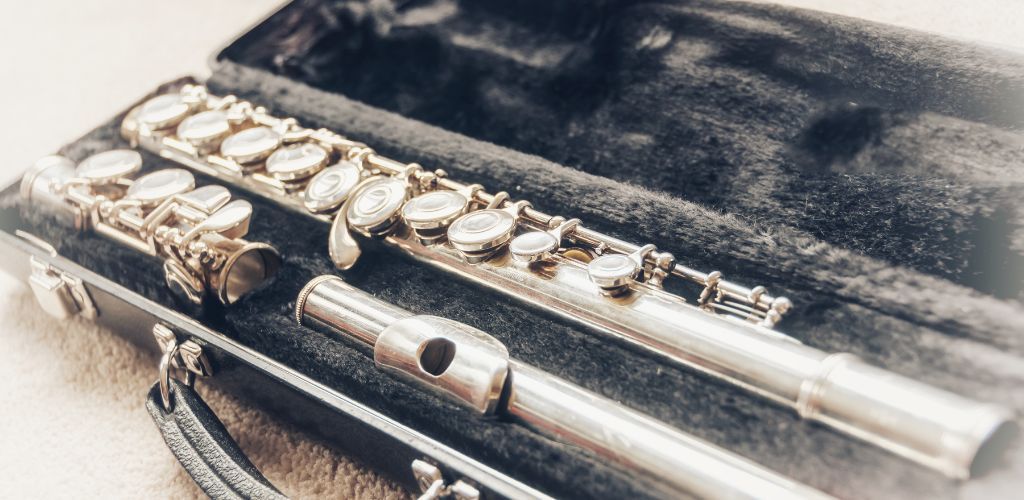
Many flutists experiment with different head joints to find the one that best suits their playing style and helps them reach those elusive high notes.
Techniques for
Reaching High Notes

Now that we understand the flute’s anatomy, let’s explore some techniques to help you reach the highest note on the flute.
Proper Embouchure
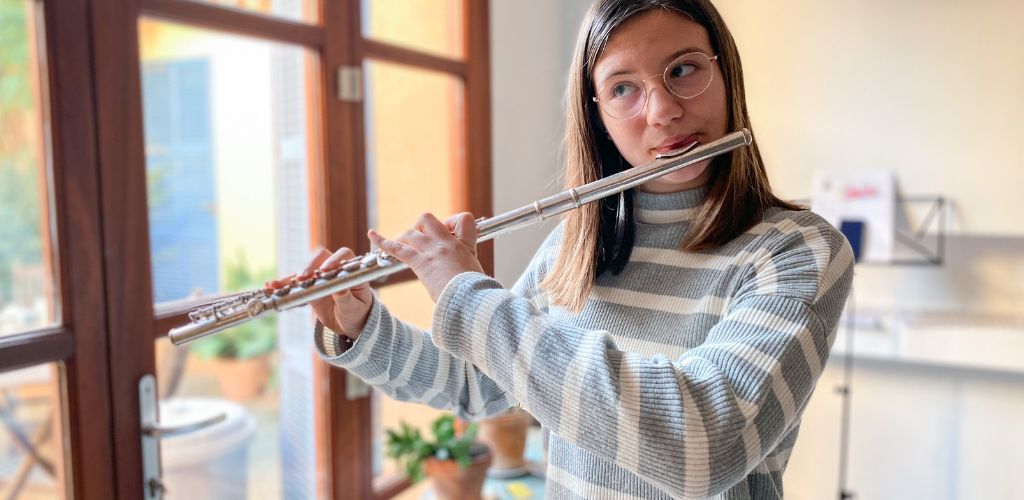
Your embouchure, or the way you shape your lips around the mouthpiece, is crucial for producing high notes.
To play high notes, you’ll want to create a smaller aperture with your lips, focusing the air stream. This helps direct the air more efficiently, allowing for clearer high notes.
Air Support

Strong air support is essential for reaching high notes.
Using your diaphragm to control your breath will provide the necessary power and stability. Think of your breath as a steady stream, pushing the air through the flute with confidence.
Finger Placement
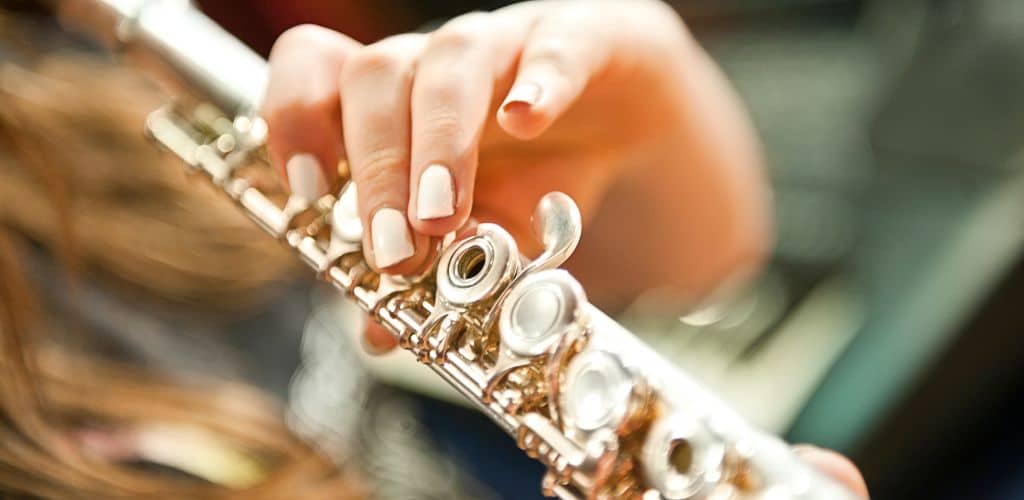
Proper finger placement can also affect your ability to reach high notes.
Ensure that your fingers are positioned correctly on the keys to facilitate smooth transitions between notes. Practice scales and exercises that focus on high notes to build muscle memory and dexterity.
Relaxation and Posture
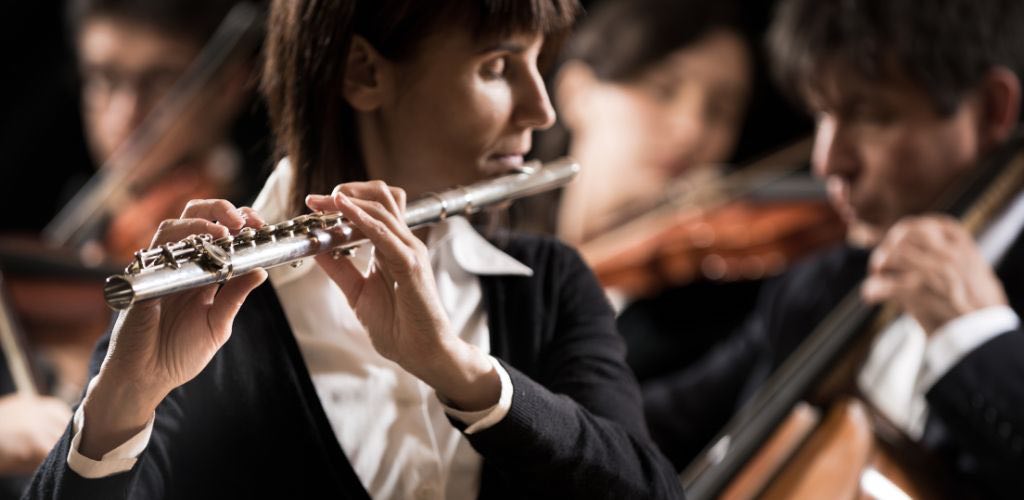
Maintaining a relaxed posture is key when attempting high notes.
Tension can hinder your ability to produce clear sounds, so be mindful of your body. Stand or sit tall, keep your shoulders relaxed, and breathe deeply to help ease any tension.
Practice Makes Perfect
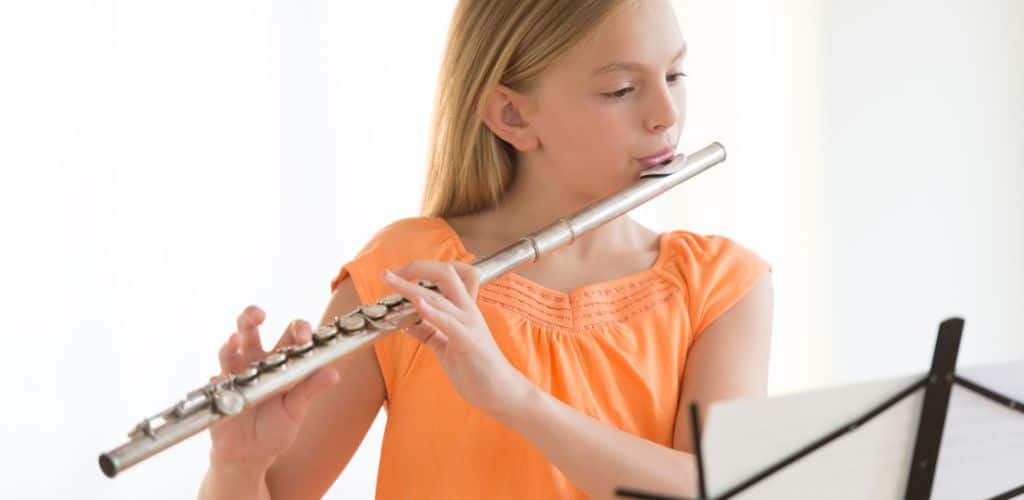
Like any skill, reaching high notes takes practice. Incorporate high note exercises into your daily routine, gradually increasing your range.
With time and dedication, you’ll find that those high notes become more accessible and enjoyable to play.
The Role of
High Notes in Music
High notes on the flute are not just impressive technical feats; they serve an essential role in music.
They add color, emotion, and drama to a piece, enhancing the overall musical experience. Composers often use high notes to evoke feelings of joy, excitement, or even tension, making them a powerful tool in storytelling through music.
High Notes in Classical Music

In classical music, high notes are often featured prominently in concertos and solos.
Flutists like Jean-Pierre Rampal and James Galway have made a name for themselves by showcasing their ability to reach stunning high notes.
These moments can leave audiences in awe, highlighting the flute’s unique ability to soar above the orchestra.
High Notes in Contemporary Music
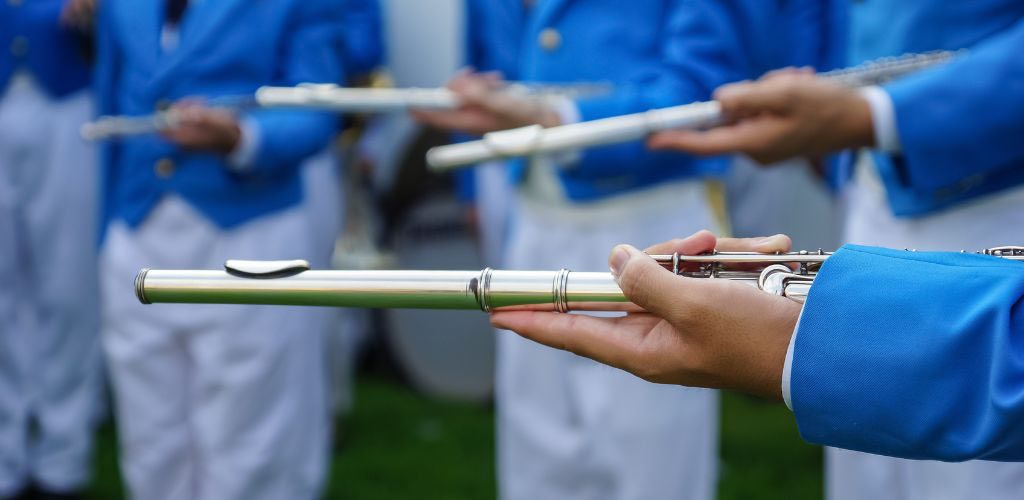
In contemporary music, high notes are equally important.
Genres like jazz and pop frequently utilize high notes to create memorable hooks and emotional climaxes. Flutists in these genres often experiment with extended techniques, pushing the boundaries of what can be achieved on the instrument.
Flute Recommendation
Yamaha
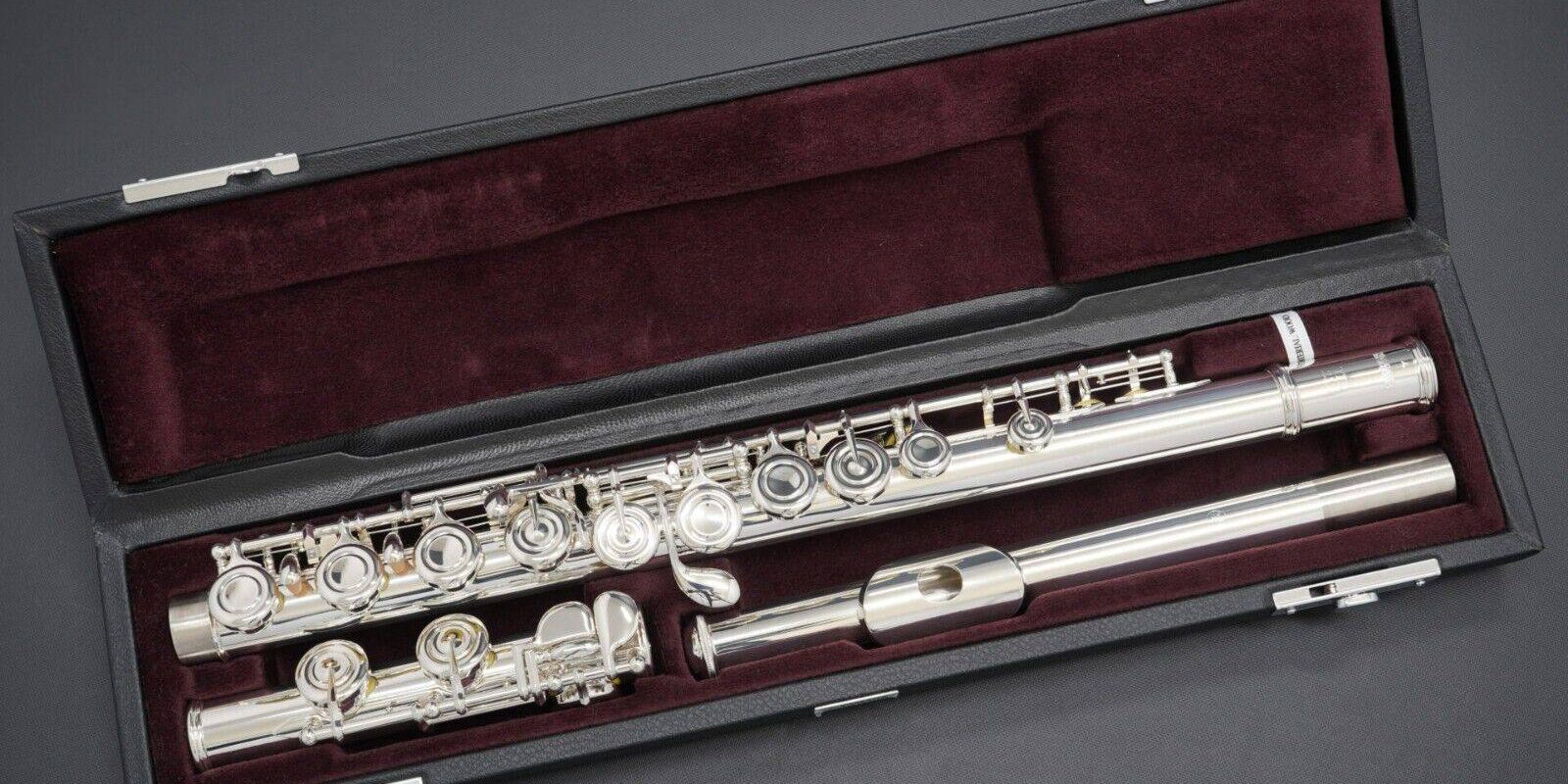
My first flute was a Yamaha; honestly, it was love at first note. Yamaha flutes are widely respected for their consistent quality and are often the go-to choice for novice players.
Their student models, such as the YFL-212, offer a smooth and responsive playing experience with an offset G key perfect for smaller hands.
Yamaha YFL212

COMES WITH: Basic Kit
FEATURES: Silver plated throughout which offers great sound quality for a beginner instrument
Yamaha YFL212
- Very durable and portable
- Very easy to produce the first sounds
- There are cheaper models available
When you click ‘Check Price’, you’ll see there are loads of great places to buy this item. Our personal favorite is Sweetwater for the US, and Thomann and Gear4Music for the UK & Europe.
They are the largest music retailers, with excellent customer service, competitive prices, really fast shipping, and the longest guarantees.
The professional musician who wrote this article combined many things,
from the product build, manufacturer’s reputation through to feedback
from other users, to create our famous TedScore™.
Pearl
Pearl flutes are like reliable friends you can always count on. Their charm combines durability with a stunning tone, making them a top pick for intermediate flutists.
My experiences with the Pearl 505RBE1RB Quantz Series flute tell me it’s a choice that won’t disappoint, with features like pinless mechanisms and French pointed arms.
Pearl Flutes 505RBE1RB Intermediate Flute

FEATURES: Traditional craftsmanship combined with modern innovation.
OTHER INFO: Silver-plated head joint, body, and foot joint.
- Hand-assembled silver-plated keys are effortless to play.
- Comfortable offset G key system with French-style open keys and split E mechanism.
- It Includes a French case with a cover, cleaning cloth, cleaning rod, and polishing cloth.
- It may offer limited customization options compared to other intermediate flutes.
When you click ‘Check Price’, you’ll see there are loads of great places to buy this item. Our personal favorite is Sweetwater for the US, and Thomann and Gear4Music for the UK & Europe.
They are the largest music retailers, with excellent customer service, competitive prices, really fast shipping, and the longest guarantees.
The professional musician who wrote this article combined many things,
from the product build, manufacturer’s reputation through to feedback
from other users, to create our famous TedScore™.
Wm. S. Haynes
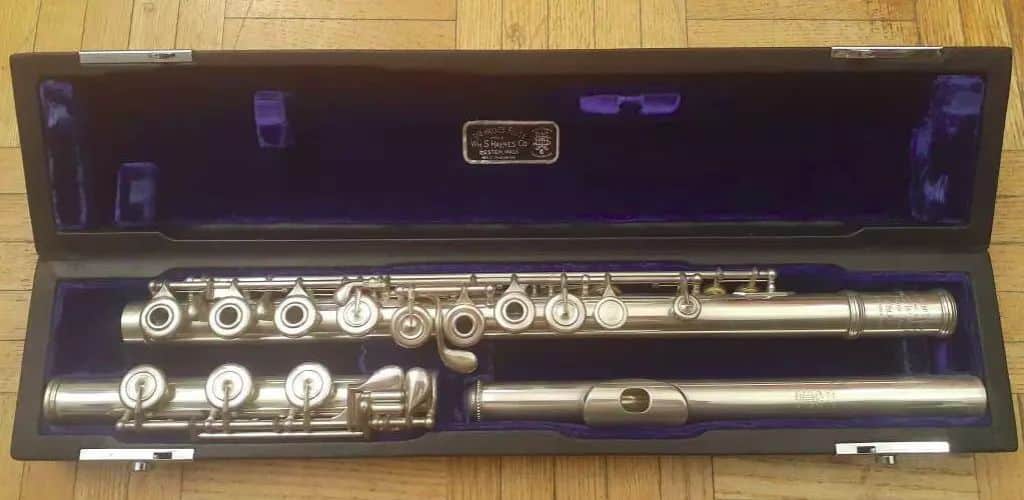
Wm. S. Haynes flutes shine with their artistically sculpted tone in the hands of discerning flutists. It’s known that Wm. S. Haynes utilizes 18K Gold Riser, and their flutes offer a beautiful spectrum of colors in their sound owing to this craftsmanship.
Wm. S. Haynes Custom Silver Flute
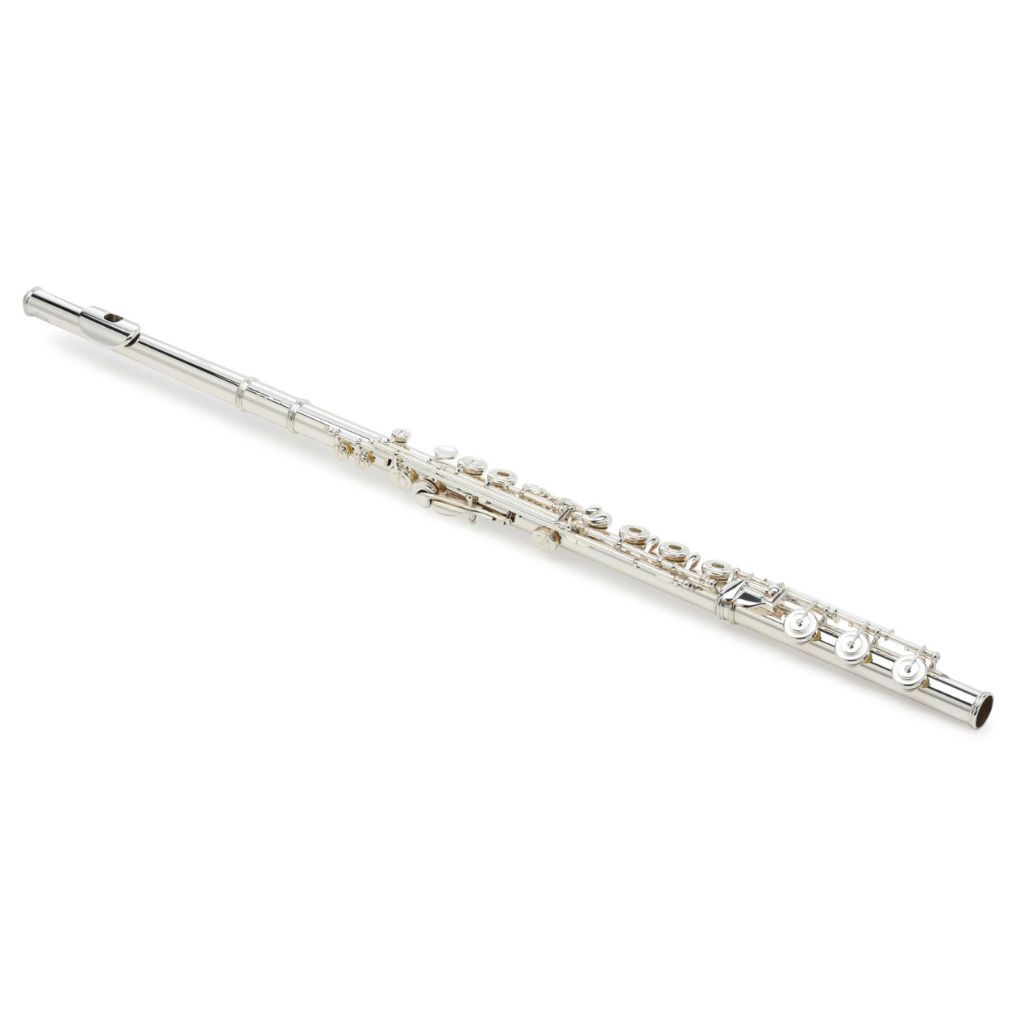
FEATURES: Custom-crafted professional concert flute with luxurious features.
OTHER INFO: Coin silver N-cut head joint delivers a broad, stable tone and remarkable playability.
- High-quality 10k white gold springs deliver top-notch responsiveness.
- Pisoni S2 pads provide an airtight seal.
- B foot joint extends the low range of the instrument.
- 18k gold riser adds to the flute's already exquisite tone quality.
- Includes case for safe storage and transport.
- Handmade in Acton, Mass.
- Higher price point.
When you click ‘Check Price’, you’ll see there are loads of great places to buy this item. Our personal favorite is Sweetwater for the US, and Thomann and Gear4Music for the UK & Europe.
They are the largest music retailers, with excellent customer service, competitive prices, really fast shipping, and the longest guarantees.
The professional musician who wrote this article combined many things,
from the product build, manufacturer’s reputation through to feedback
from other users, to create our famous TedScore™.
Final Verdict:
Highest Note On The Flute
The highest note on the flute is typically C7, which is reached using advanced high note fingerings on the western concert flute.
While the concert flute can soar to these impressive heights, other types of flutes, like the alto flute and bass flute, have different ranges and characteristics. The alto flute, for instance, has a lower pitch and is tuned a fourth below the concert flute, while the bass flute plays an octave lower than the concert flute.
In the third octave, flutists can explore a range of dazzling high notes, showcasing the versatility of modern flutes. Conversely, the lowest note on the concert flute is typically C4, providing a rich foundation that contrasts beautifully with the instrument’s higher capabilities.

Highest Note: C7 is generally considered the highest note on the flute that can be played with clarity.
Techniques: Proper embouchure, air support, and finger placement are essential for reaching high notes.
Musical Significance: High notes enhance emotional expression and add excitement to performances.
Practice: Consistent practice is crucial for mastering the techniques needed to play high notes effectively.
Inspiration: Renowned flutists like Jean-Pierre Rampal and James Galway demonstrate the beauty of high notes in their performances.
Achieving clarity and control at such high pitches opens up a world of musical possibilities, allowing flutists to express emotions and captivate audiences. Whether in classical compositions or contemporary pieces, high notes add a unique sparkle to the music.
With practice and perseverance, any flutist can reach these soaring heights and discover the joy of playing the highest notes on the flute!
Wait! There’s more…
If you’re looking to make an informed decision about purchasing a flute, be sure to check out the Flute Brands to avoidto steer clear of potential pitfalls and ensure you choose a quality instrument.
FAQ's
The highest key on the flute is typically the C7, which is two octaves above middle C (C4). This note is achieved by using advanced techniques and precise fingerings, making it one of the most challenging notes to play on the instrument.
The highest tone on the flute is generally considered to be C7, which is the highest note commonly played in standard flute repertoire. Achieving this note requires advanced technique and control, making it a remarkable feat for flutists.
The deepest note on the flute is typically C4, also known as middle C. This note is produced using the lowest fingering on the instrument and provides a rich, resonant sound that contrasts with the flute’s higher registers.
The highest pitch flute is the piccolo, which plays an octave higher than the concert flute. Piccolos typically have a range that extends up to C7 or even higher, making them one of the highest-pitched instruments in the woodwind family.










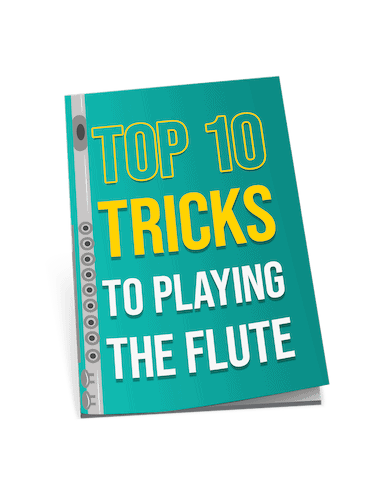
Hannah , really enjoyed the article! But, I’ve gotta say, I think you might’ve oversimplified the role of the headjoint in reaching high notes. From what I’ve learned, the headjoint’s design significantly impacts the ease with which flutists can produce high notes due to the acoustics and harmonics involved. Would love to see more depth on this topic, maybe a follow-up piece focusing on the science behind it?
I find it fascinating how high notes can significantly affect the emotional impact of a piece. Your sections on high notes in classical and contemporary music highlight their importance beautifully. It’s something I try to consider in my songwriting, even though I mainly work with digital instruments.
Nice outline! High notes are the soul of flute music.
Practice, patience, and more practice. It’s all about breath control!
Totally agree with you! Any advice on how to start hitting those notes?
Hey, I was really intrigued by the part about reaching high notes on the flute. As someone who’s just dabbling in flute playing, I find it super challenging to get those notes right. You mentioned several techniques like proper embouchure, air support, and finger placement. Could you maybe dive a bit more into how to effectively combine these techniques? I feel like I’m missing a piece of the puzzle here. Any additional tips would be a game-changer!